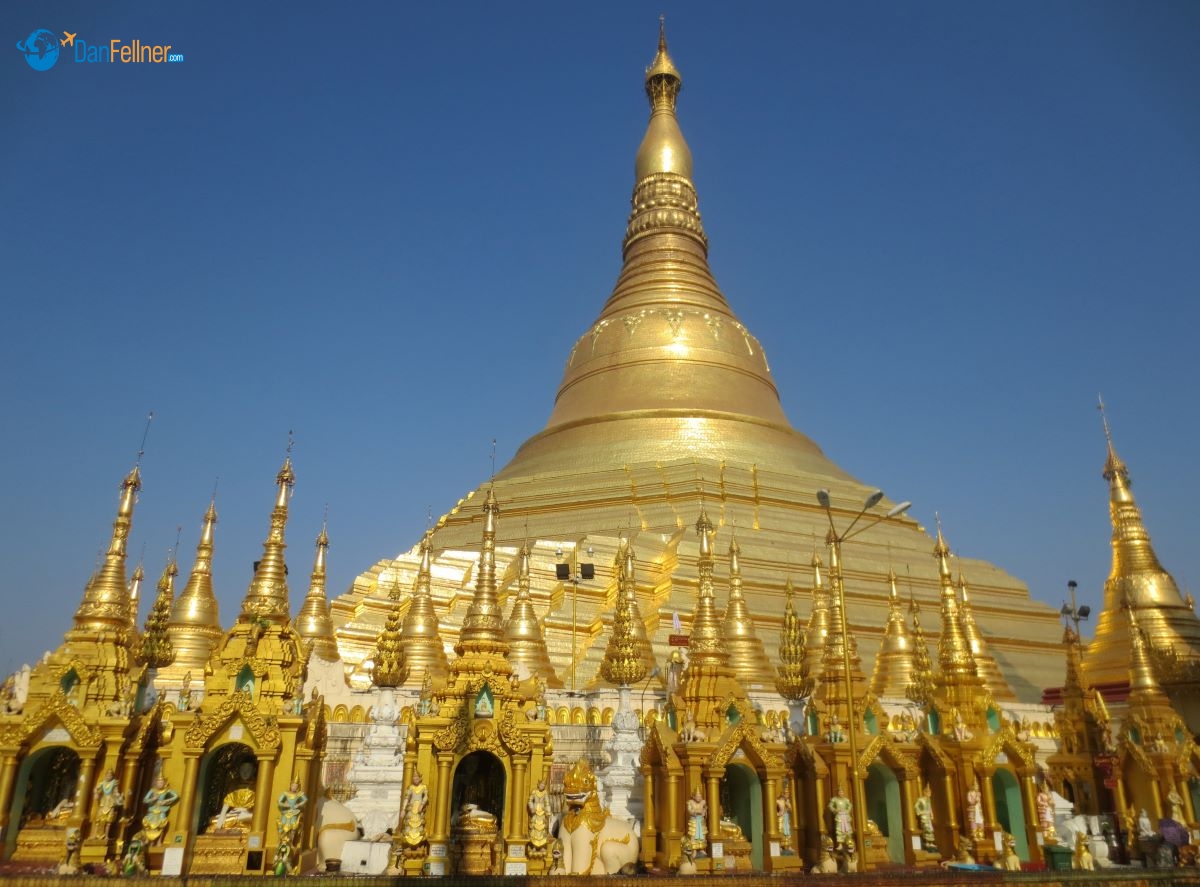Emerging democracy beginning to open for tourists
The Arizona Republic — May 22, 2016
YANGON, Myanmar – Democracy is slowly coming to this little-known country in Southeast Asia of more than 50 million people, and with it, so are the tourists.
Isolated from the rest of the world for a half-century under a repressive military junta, Myanmar is now letting visitors explore its wondrous Buddhist pagodas, ancient archaeological sites and stately British colonial architecture.
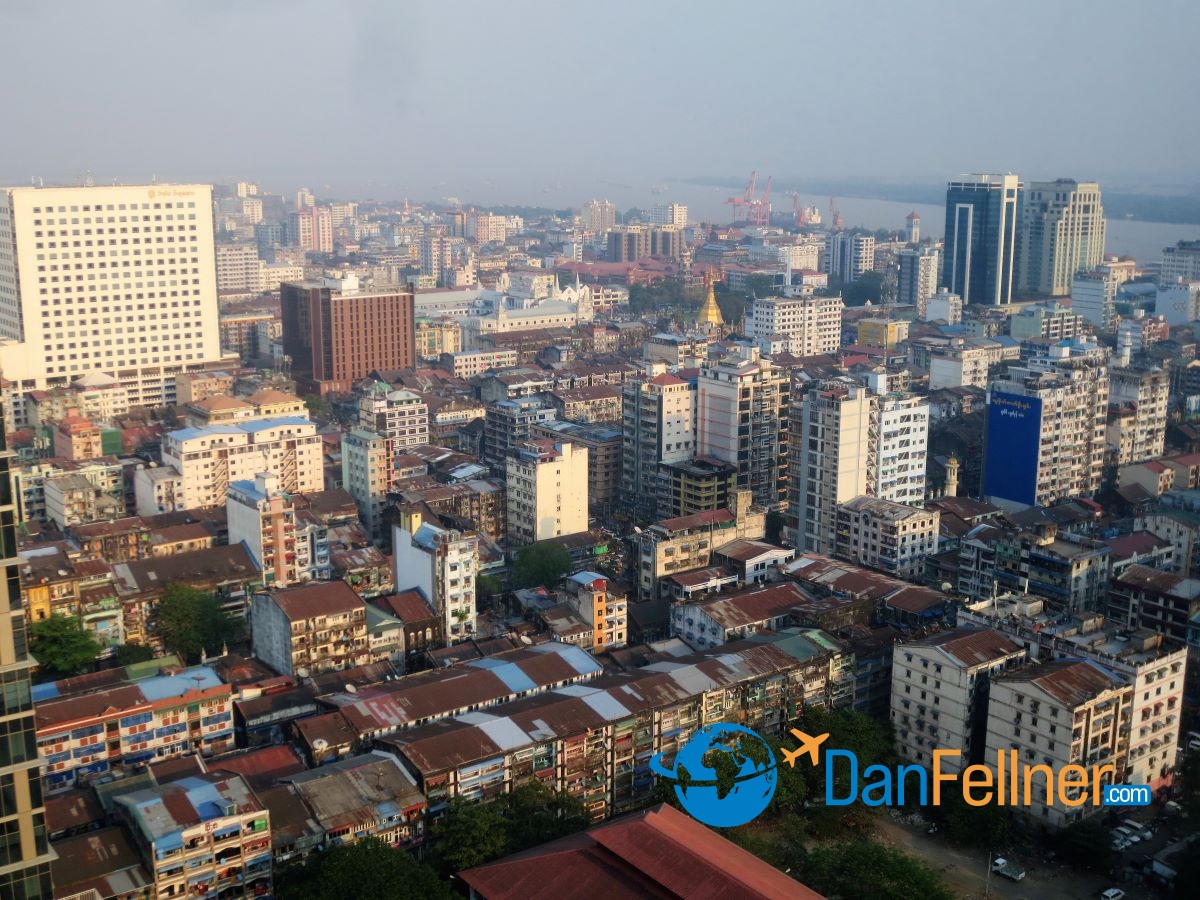
Downtown Yangon (formerly known as Rangoon), Myanmar’s largest city.
I recently spent three days in Yangon, the largest city in this country formerly known as Burma. The visit to Myanmar was the highlight of an 18-day cruise called “Imperial Treasures” on the Oceania Nautica that started in Hong Kong and ended in Mumbai, with other stops in Vietnam, Thailand, Singapore and Cochin, India. All told, we sailed more than 5,000 miles.
For me, the most coveted treasure on this exotic itinerary was the port call in Yangon. Within five minutes of boarding a tour bus taking the ship’s passengers on a one-hour drive from the pier to downtown Yangon, the sense of excitement among the locals was palpable.
“The whole country is very happy,” our guide Khin said when discussing the country’s first democratically elected parliament, which assumed power in February. The National League for Democracy (NLD), led by Nobel Peace Prize laureate and national hero Aung San Suu Kyi, won a landslide victory and now controls the parliament. However, the military hasn’t completely relinquished its grip on power and Myanmar still faces a long road to full democracy.
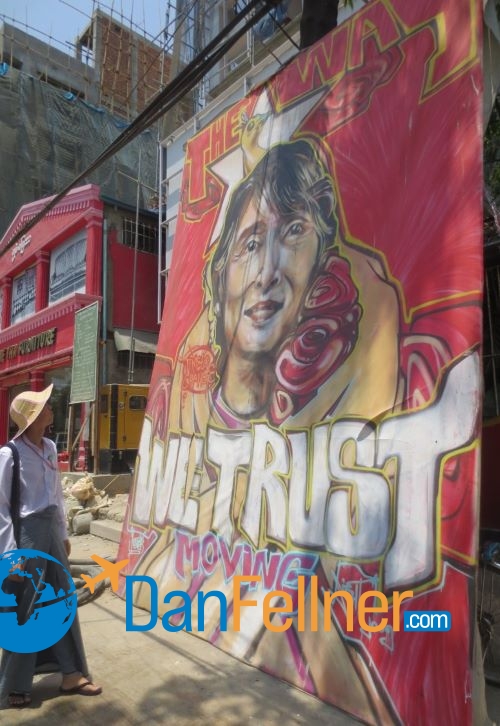
A street portrait of Nobel Peace Prize laureate Aung San Suu Kyi in downtown Yangon.
The new political era has led to a dramatic jump in tourism. According to government statistics, the number of international visitors has nearly quadrupled in the last five years to more than 3 million travelers in 2014. Projections are that foreign arrivals will reach 7.5 million by 2020.
In that sense, Myanmar evokes comparisons to Cuba. If you want to visit before the country becomes overrun with tourists and loses some of its character, now is the time to go.
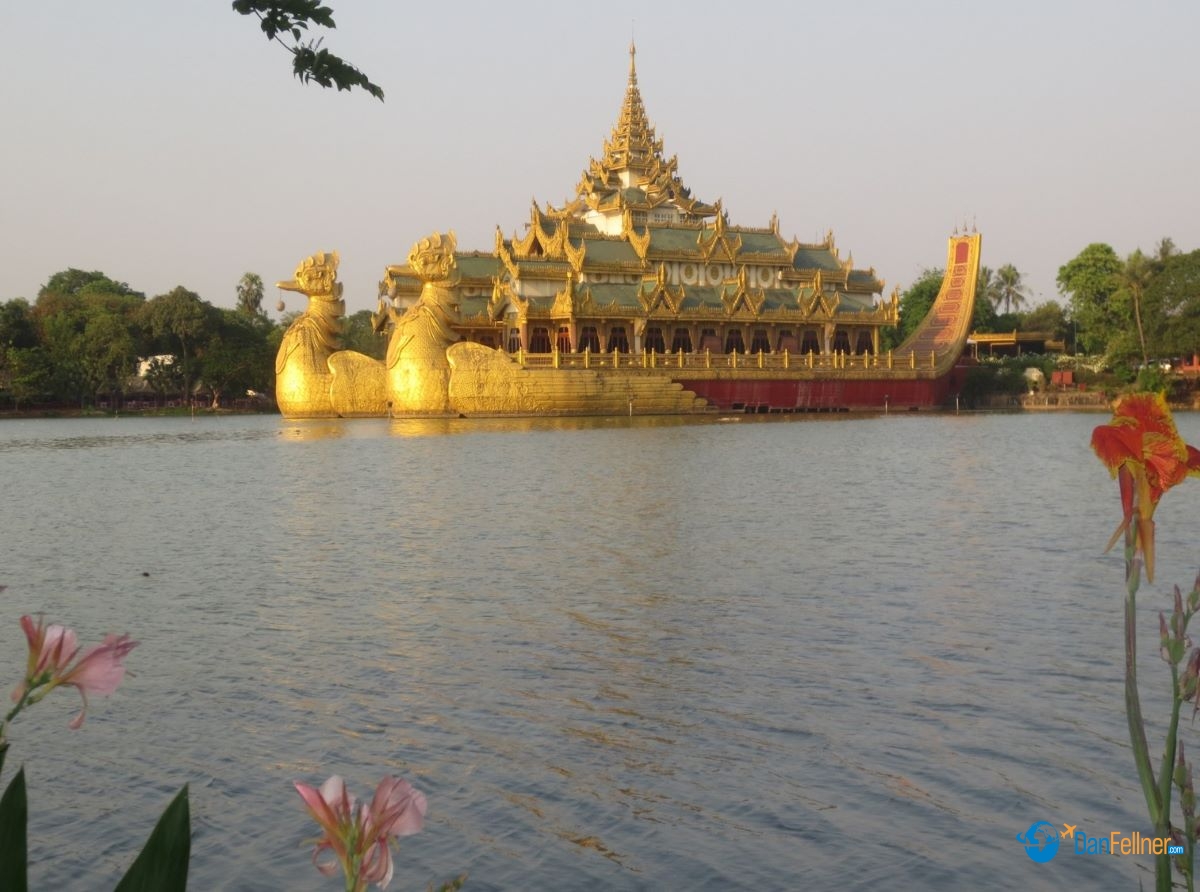
The Karaweik Royal Barge on a Yangon lake.
Yangon, called Rangoon under British rule, is a congested city of more than 5 million people who seem welcoming to the relatively new influx of visitors – and the foreign currency they are bringing to this impoverished nation.
The city’s must-see attraction is the spectacular 2,500 year-old Shwedagon Pagoda, a monument to Buddhism that was built on a hilltop in the center of Yangon. Its glorious stupas, shrines and sculptures sprawl over 12 acres. The pagoda’s glistening center dome is covered with thousands of priceless gold plates and other precious gems.
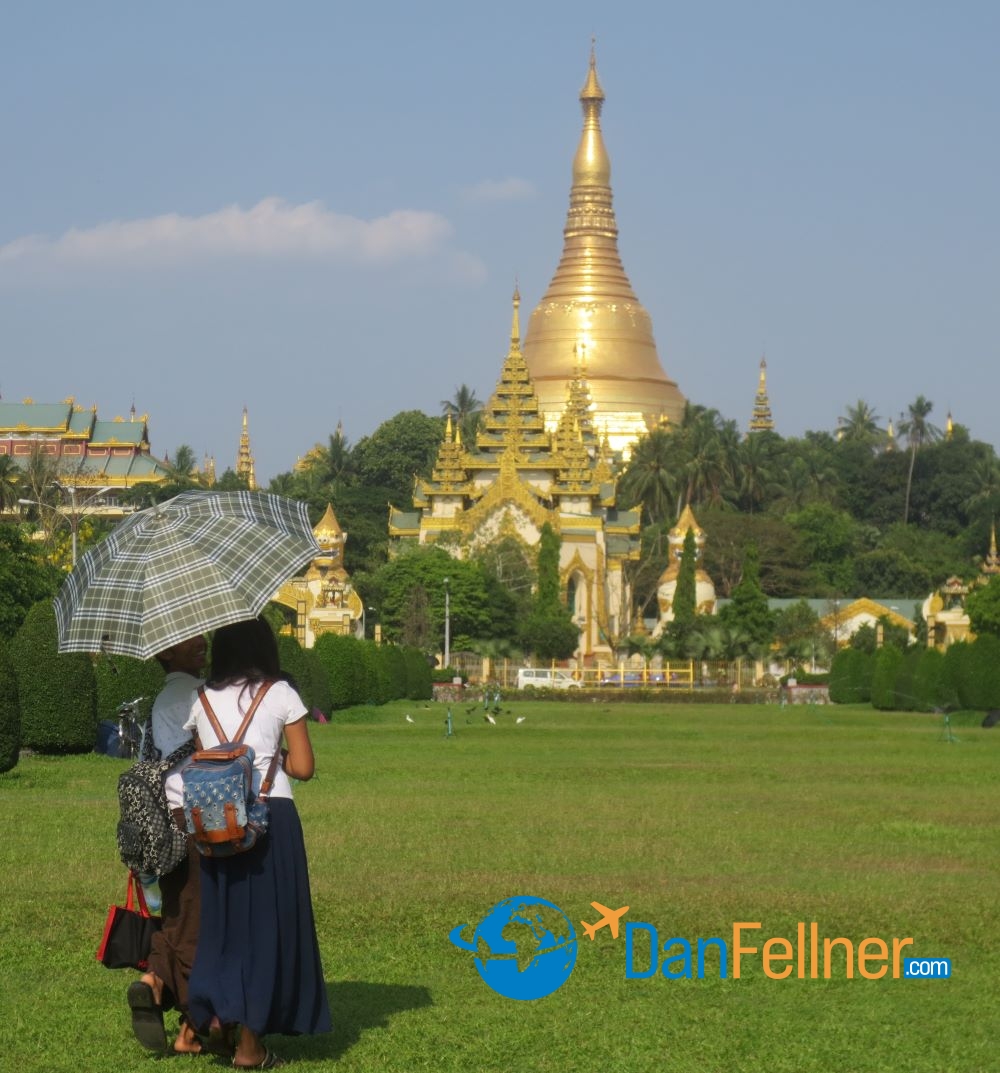
A couple strolls in a Yangon park near the Shwedagon Pagoda.
According to Buddhist tradition, visitors are asked to remove their shoes and socks before entering the Shwedagon complex. In the mid-afternoon, when temperatures soar past 100, strolling barefoot on the hot pavement makes exploring uncomfortable, so it’s best to go early or late in the day.
From Shwedagon, it’s a 15-minute walk to the surrealistic Karaweik Royal Barge, a floating palace on the eastern edge of Royal Kandawgyi Lake. Built in the shape of the mythical karaweik bird, the barge is a stunning example of traditional Myanmar architecture. It is used as a restaurant and also hosts cultural performances.
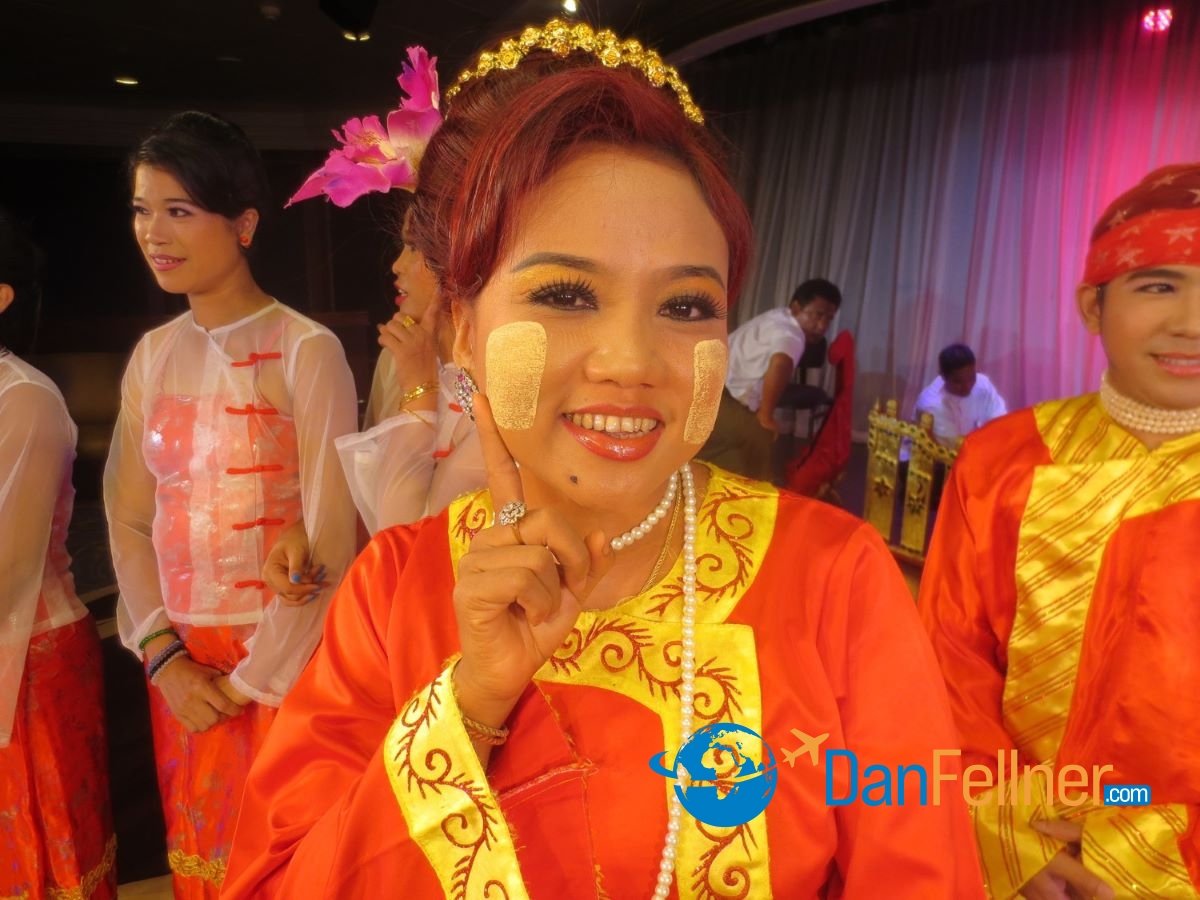
A performer in the Ta Khaing Lone Shwe Dance Troupe points to her traditional Burmese makeup called thanaka following a performance on the Oceania Nautica.
The Nautica’s passengers were treated to a performance of one of Myanmar’s most famous folklore groups, when the Ta Khaing Lone Shwe Dance Troupe was brought onboard for an evening show in the ship’s theater. The performers wowed us with their grace, beautiful costumes, unusual musical instruments and intricate dance moves (to see a video clip I shot onboard the Nautica, click on this link: https://www.youtube.com/watch?v=2d353Ku9Kec)
Interested in the country’s political landscape, I visited the home of the 70-year-old Suu Kyi, where she still lives and once spent 15 years under house arrest for her opposition to the government. Even though the inside of the home is closed to visitors, it is viewed by many Myanmar people as a shrine. A large portrait outside the complex honors Suu Kyi’s father, who was the driving force behind the country’s independence from the United Kingdom in 1948.
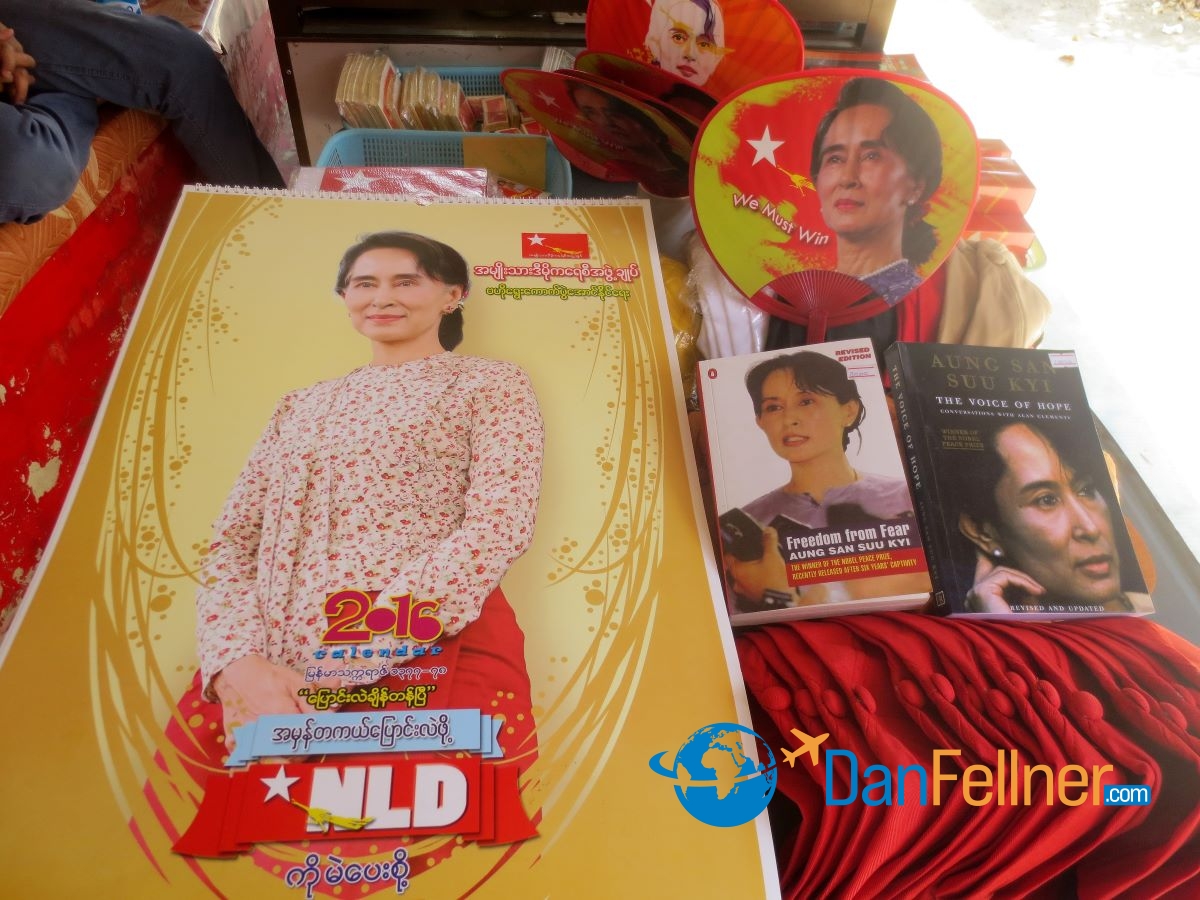
Aung San Suu Kyi merchandise for sale at the National League for Democracy (NLD) party headquarters.
Nearby, I also visited the headquarters of the National League for Democracy, which sells Aung San Suu Kyi merchandise such as posters, calendars and books to raise money for the pro-democracy movement. For $2 (U.S. dollars are widely accepted in Yangon), I bought an NLD hat.
About 90 percent of the country’s population practice Buddhism. Oceania arranged to take us to an authentic “noviciation” ceremony, in which three six-year-old boys were inducted as novice Buddhist monks at a Yangon monastery. After having their heads shaved, the boys donned their purple robes for the first time. Most males in Myanmar serve as monks for at least part of their lives.
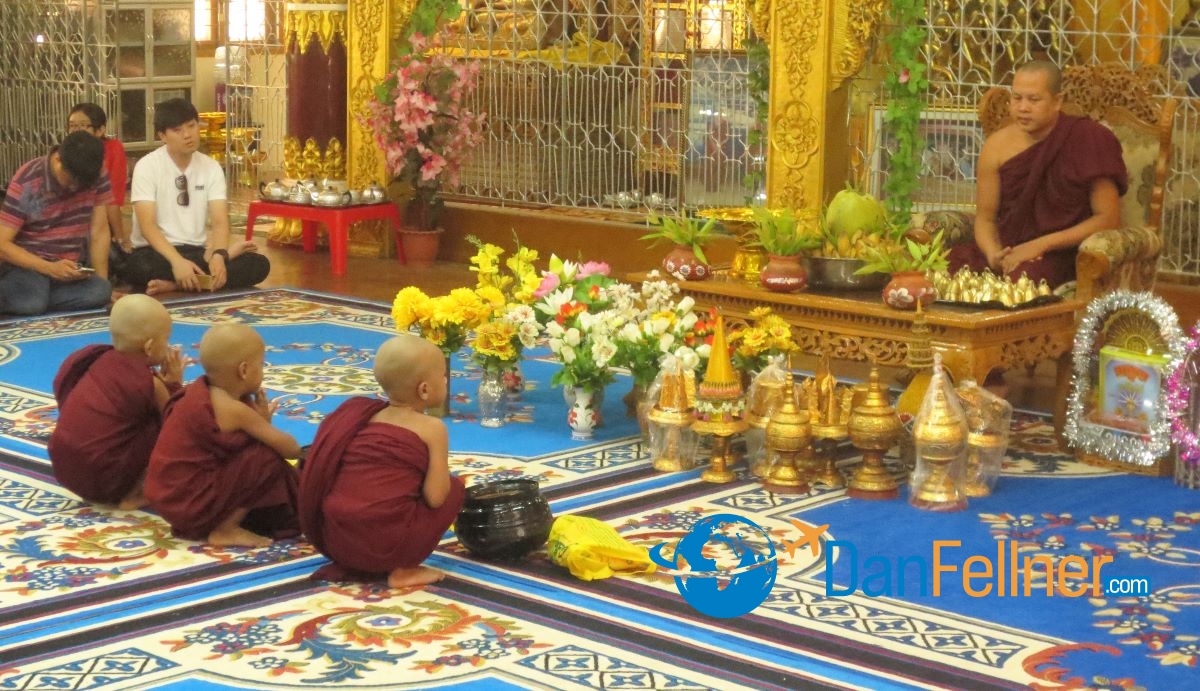
Three Burmese boys are inducted as novice monks at a noviciation ceremony in a Yangon monastery.
Oceania, an upscale Florida-based cruise line with a fleet of six midsize ships known for high-end cuisine and off-the-beaten-path destinations, has been calling on Myanmar since 2011. Two Oceania ships – the 684-passenger Nautica and her sister ship, the Insignia, make two-or-three day stops in Yangon several times a year. The Yangon River is only navigable by midsize and smaller vessels, which precludes the mega-ships from reaching the city.
Our sailing was nearly full with 652 passengers, about 80 percent of whom were Americans and Canadians.

Youngsters play soccer on a street in downtown Yangon.
Having been closed off from the rest of the world for so long, the tourism infrastructure in Myanmar is still lacking. English isn’t widely spoken, roads are in poor condition and sanitary conditions are sometimes less than ideal.
All this makes cruising an ideal way to explore Yangon, particularly for less-experienced travelers.
At the end of a full day of experiencing Yangon’s hectic pace, backwater charm, emerging democracy and relatively uncrowded sites, nothing beats returning to an air-conditioned ship, a delightful meal with a glass of good wine and a clean bathroom.
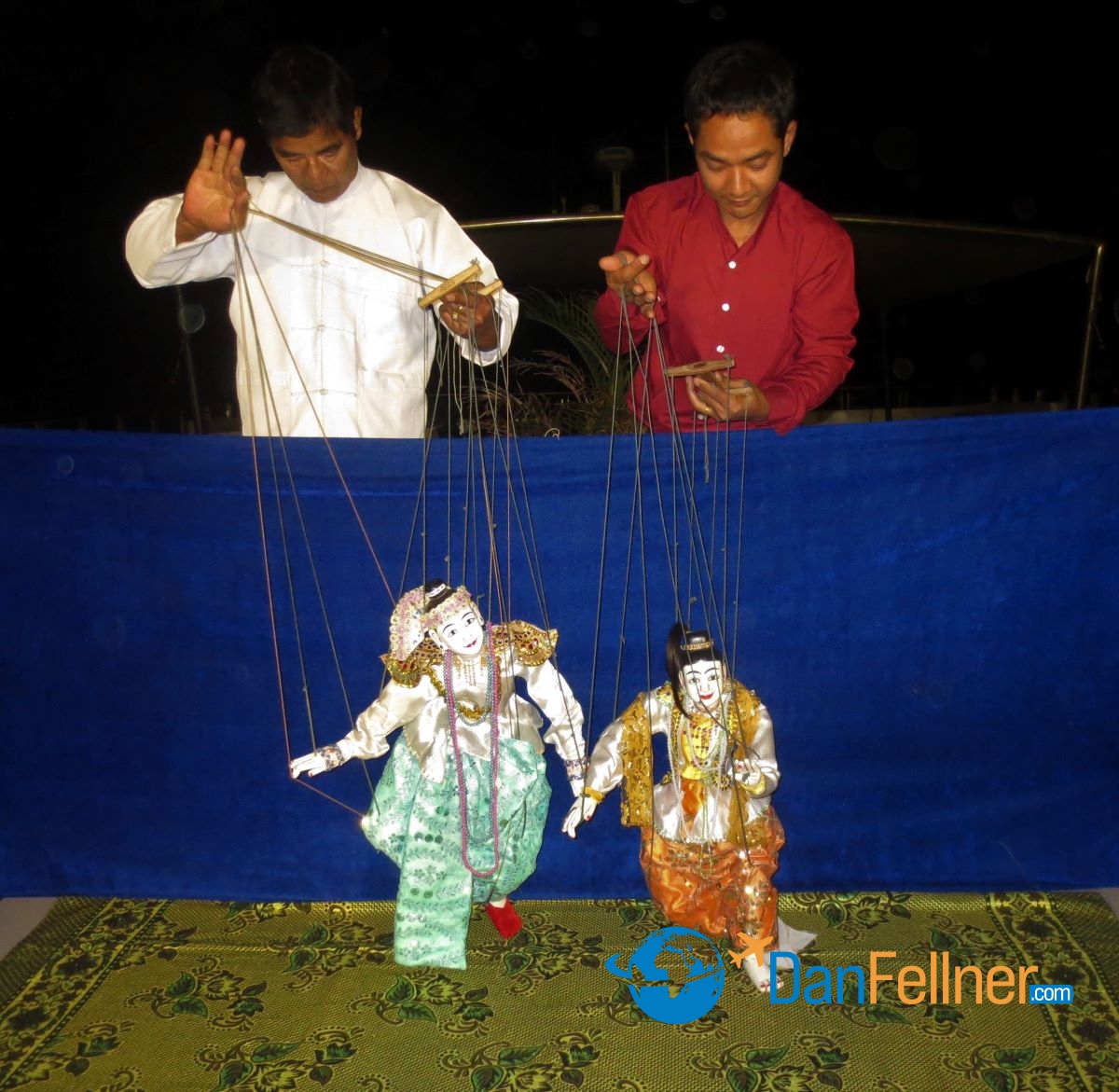
A traditional Burmese string puppet show.
© 2016 Dan Fellner

